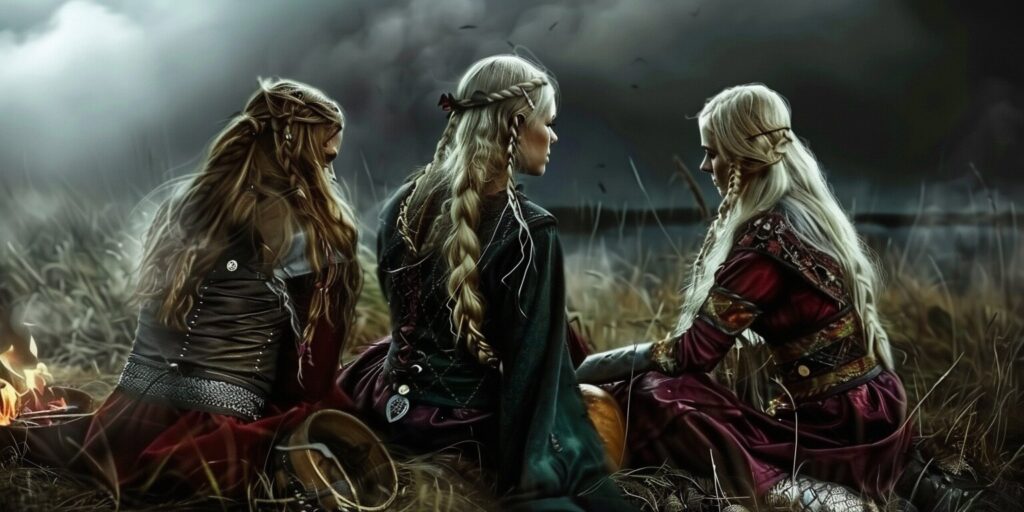Daily Life in the Viking Age, Norse Mythology, Vikings
Magic of Seiðr and Spá: Were There Witches in the Viking Age
Images of fierce warriors and seafaring explorers come to mind when we think of the Vikings. But did you know that the Vikings also had a deep connection to the supernatural? In this article, we will explore the intriguing topic of witches in the Viking Age and delve into the magical practices that were an integral part of their culture.
Witches and Vikings may seem like an unlikely pairing, but evidence suggests that the Norse people held a belief in the power of magic and the existence of witches. In fact, the Vikings had their own forms of witchcraft known as Seiðr and Spá, which were closely tied to their pagan beliefs and mythology. Join us on this enchanting journey through the mystic world of the Vikings as we uncover the truth behind the magic of Seiðr and Spá and answer the age-old question: Were there Viking witches?
Exploring Norse Paganism and Viking Beliefs
To understand the role of witches in Viking times, it is essential to delve into the beliefs and worldviews of the Norse people. The Vikings were deeply rooted in pagan traditions and held complex beliefs that shaped their understanding of the supernatural and the magical.
Norse paganism was centered around a pantheon of gods and goddesses, with Odin, Thor, and Freya being among the most prominent figures. These deities were believed to govern various aspects of life, including war, fertility, and wisdom.
Magic played a significant role in Norse mythology. The Vikings believed in witchcraft and the existence of witches who possessed supernatural abilities. However, it is worth noting that the Viking belief in witches differed from the more negative connotations that emerged in later centuries.
- Viking beliefs in witches were connected to the concept of “seidr,” which involved harnessing magical powers and communicating with the spirit world.
- The Vikings believed that certain individuals, usually women known as “volvas” or “seeresses,” possessed the innate ability to perform seidr and gain insights into the future.
- The practice of seidr allowed these volvas to tap into the forces of nature and connect with supernatural beings.
Considering the significance of seidr and the belief in witches, it becomes evident that Norse mythology and Viking culture intertwined magical elements with their everyday lives.
The Viking view of witchcraft also included belief in various supernatural beings. Norse mythology was populated by creatures such as trolls, giants, and spirits, which were often associated with magic. These beings inhabited a mystical realm intertwined with the human world, and their interactions with mortals played a crucial role in Viking folklore.
Overall, the pagan beliefs of the Vikings held witches and magic in high regard, viewing them as powerful conduits to the supernatural. This perspective on witches differed from the negative associations that arose in later centuries, reflecting the unique worldview and spirituality of the Viking Age.
Magic and Sorcery in Viking Society
Magic and sorcery played a significant role in Viking society, permeating every aspect of their lives. The Vikings held a deep belief in the supernatural and relied on various magical practices to navigate their world. Their rich folklore and ancient traditions shed light on their fascination with witches and the supernatural.
Viking folklore is replete with tales of witches who possessed otherworldly powers and abilities. These witches were believed to have the ability to communicate with spirits, use charms and potions, and even shape-shift into animals. Considered both feared and respected, these witches were said to be capable of bringing fortune or misfortune to individuals and communities.
Viking society held strong supernatural beliefs, viewing witches as intermediaries between the natural and spiritual realms. They believed that witches could tap into powerful forces and manipulate nature itself. These beliefs are reflected in the various types of magical practices that the Vikings engaged in.
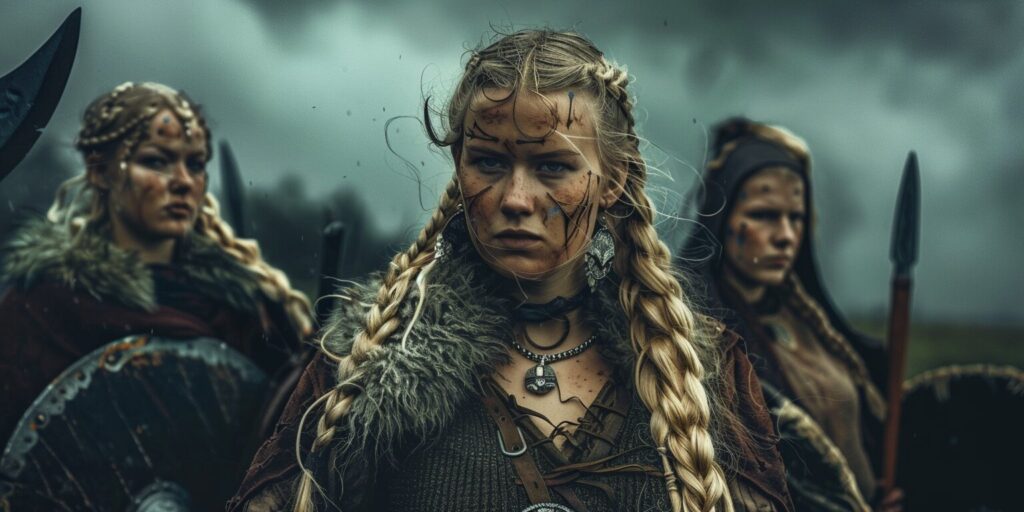
Sorcery and Spellcasting
One form of magic prevalent in Viking society was sorcery. Vikings believed that sorcerers possessed the ability to cast spells, inflict curses, and enchant objects. These sorcerers were often consulted for matters of love, protection, and success. Their spells were believed to have a tangible impact on the physical and spiritual realms.
Divination and Prophecy
Divination and prophecy were also integral to Viking magical practices. Seers and oracles would use various methods to gain insight into future events or seek guidance from the gods. Runes, the ancient Norse alphabet, were often used for divination purposes, with each symbol representing a different meaning or message from the spiritual realm.
Protection and Healing
Witchcraft in Viking society was not solely focused on malevolent practices. Witches were also sought after for their ability to provide protection and healing. They were believed to possess knowledge of herbs, amulets, and rituals that could ward off evil spirits, cure ailments, and ensure the well-being of individuals and communities.
The Vikings’ supernatural beliefs were intrinsic to their daily lives, influencing their decisions, rituals, and interactions with the natural and spiritual worlds. The practice of magic and the existence of witches were deeply rooted in their culture and worldview, leaving a lasting legacy that still captivates our imagination today.
Seiðr: The Feminine Magic of the Vikings
Viking society was a complex tapestry of beliefs and practices, with magic playing a prominent role. One form of magic that held particular significance was Seiðr, a mystical art associated with women. Seiðr rituals were seen as powerful and were often performed by skilled practitioners known as seiðkonur.
Seiðr involved manipulating energies and spirits, allowing seiðkonur to gain insights into the past, present, and future. The practice combined divination, prophecy, and spellcasting, making it a comprehensive form of magic encompassing multiple spiritual and mystical arts aspects.
During seiðr rituals, the seiðkonur would enter a trance-like state, connecting with the spirits and deities of the Norse pantheon. They would chant, sing, and perform sacred gestures to evoke energies and shape their outcome. These rituals were often conducted in a sacred space, such as a mound or a secluded area in nature, where the connection to the spiritual realm was believed to be strongest.
The Roles of Seiðkonur
Seiðkonur held a respected position in Viking society, as their magical abilities were highly valued. They were sought after for their insights, prophecies, and healing abilities. Seiðkonur were known to offer guidance on matters of love, war, and everyday matters, acting as spiritual advisors and mediators between the human and supernatural realms.
However, the practice of seiðr was not without its controversies. While seiðkonur were respected in some circles, there were also those who regarded their magical powers as taboo or even sinister. The association between Seiðr and witchcraft may have arisen from these skeptical views and the fear of the unknown.
Seiðr and Witchcraft: Potential Connections
The practice of seiðr shared similarities with certain aspects of witchcraft. Both involved the manipulation of unseen energies, the invocation of spirits, and the use of rituals and spells. It is possible that the cultural perception of seiðr as a feminine form of magic contributed to its association with witchcraft.
However, it is important to note that while seidr and witchcraft shared some similarities, they were not synonymous. Witchcraft, as understood in other historical and cultural contexts, often involved harmful magic and the intent to cause harm or manipulate others. Seiðr, on the other hand, encompassed a broader range of practices, including healing and divination.
The exact nature of the connections between seiðr and witchcraft in Viking society is still a subject of debate among scholars. Some argue that the association was a result of bias against women’s power and influence, while others believe it was a genuine parallel between two distinct magical practices.
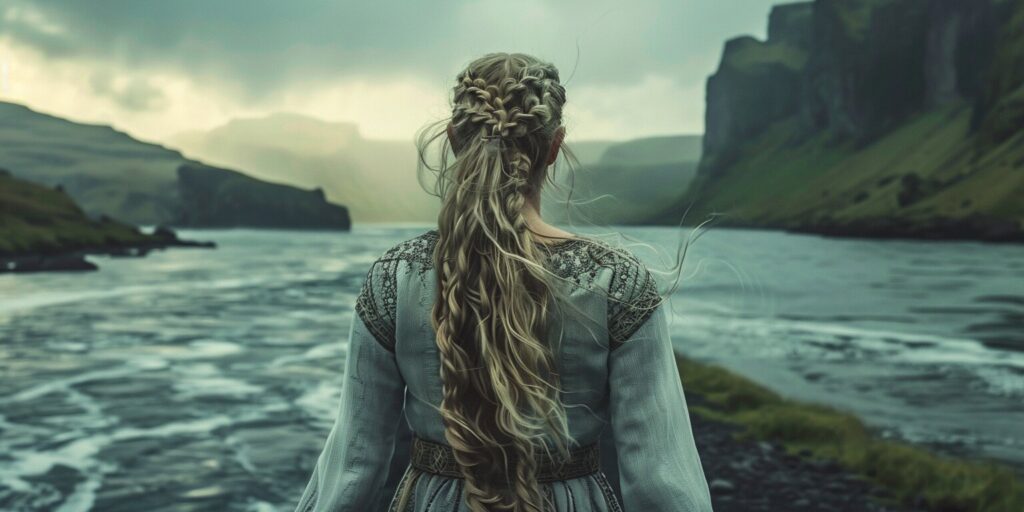
The Legacy of Seiðr
The practice of seiðr dwindled as Christianity spread throughout the Viking lands, and the old pagan traditions diminished. However, the legacy of seiðr lives on in folklore and mythology, where tales of powerful female practitioners continue to captivate imaginations.
Today, there is a growing interest in reviving and exploring the ancient magic of seiðr. Modern practitioners seek to understand and reclaim the tradition, honoring the wisdom and power of the seiðkonur of old.
As we delve deeper into the fascinating world of Viking magic, we will explore another mystical practice in the next section: Spá, the art of divination and prophecy in the Viking Age.
Spá: Divination and Prophecy in the Viking Age
In addition to the practice of Seiðr, another significant form of magic in Viking society was Spá, which involved divination and prophecy. Spá was a method used by seers and skilled practitioners to gain insight into the future, ask questions, and receive guidance from the spiritual realm. This ancient practice played a crucial role in shaping the beliefs and actions of the Vikings.
Through Spá, individuals sought to connect with higher powers and tap into hidden knowledge. Seers, often known as “spámaðr” or “spákona,” were highly respected for their ability to communicate with the supernatural realm and receive messages from the gods. They would use a range of techniques and tools, such as runes, bones, or animal sacrifices, to aid their divinatory processes.
The purpose of Spá was not limited to predicting future events alone. It served as a means to navigate through uncertainties, make strategic decisions, and understand the underlying forces at play within the Viking world. Seers would often assist chieftains and leaders in matters of war, exploration, and governance, providing valuable insights and ensuring the prosperity of their communities.
While Spá was widely accepted and embraced in Viking society, there were also instances where it overlapped with witchcraft beliefs. The ability to foretell the future and communicate with spirits sometimes led to accusations of magic and sorcery, particularly when the predictions were deemed malicious or harmful. In these cases, individuals practicing Spá were suspected of using their power for nefarious purposes and faced the consequences of such accusations.
The practice of Spá shed light on the complex intertwining of spirituality, magic, and everyday life in the Viking Age. It was a highly valued skill that provided insights into the unknown, empowered decision-making, and connected individuals with the divine realm. The significance of Spá in Viking culture emphasizes the deep-rooted belief in supernatural powers and the quest for knowledge beyond the physical realm.
The Role of Volvas and Seeresses
Volvas and Seeresses played a crucial role in Viking society, where magic and divination were deeply ingrained in the culture. These female practitioners held immense power and influence, serving as intermediaries between the spiritual and earthly realms.
Volvas were highly respected and revered for their ability to communicate with the gods and spirits. They used their knowledge of ancient rituals and incantations to cast spells, heal the sick, and provide guidance in matters of great importance.
Seeresses, on the other hand, specialized in divination and prophecy. They possessed the unique ability to glimpse into the future, offering insights and foresight on critical decisions and events. Their prophetic visions and wisdom were sought after by both commoners and nobles.
Their Practices and Roles
Volvas and Seeresses employed various techniques and practices to channel their magical powers and wisdom. These included chanting ancient verses, performing intricate rituals, and using tools such as runes, bones, and staffs to unlock hidden knowledge and receive divine guidance.
In Viking society, these powerful women were sought out for their abilities to resolve conflicts, provide spiritual guidance, and offer protection against malevolent forces. They were trusted advisors to kings and leaders, helping shape important decisions and strategies.
The Significance in Viking Folklore
Volvas and Seeresses hold a prominent place in Viking folklore, where their stories are intertwined with tales of heroism, magic, and destiny. They are often portrayed as wise and mystical figures, possessing knowledge of the past, present, and future.
These powerful women are seen as guardians of ancient wisdom, preserving their people’s cultural heritage and spiritual traditions. Their roles and significance in Viking society highlight the recognition and acceptance of female power and intuition.
The Legacy Today
The enduring legacy of Volvas and Seeresses can still be felt today, as modern practitioners of witchcraft and divination draw inspiration from their ancient traditions. Their connection to the spiritual realm and the wisdom they embodied continues to captivate and inspire individuals seeking a deeper understanding of the magical and mystical.
Whether as symbols of empowerment, sources of inspiration, or characters in popular culture, the influence of Volvas and Seeresses in Viking culture reminds us of the enduring fascination with magic and the significant role of women in shaping societal beliefs and practices.
Witchcraft Accusations and Trials in the Viking Era
During the Viking Age, witchcraft accusations and trials were prevalent, shedding light on the beliefs and attitudes towards witches in Viking society. These historical accounts provide valuable insights into the cultural, religious, and legal aspects surrounding witchcraft.
The Viking witchcraft trials were conducted to determine the guilt or innocence of those accused of practicing witchcraft. Accusations of witchcraft were often made against individuals who were perceived as having supernatural powers or engaging in magical practices.
Types of Witchcraft Accusations
There were various types of witchcraft accusations in Viking society. It was believed that witches could manipulate the natural elements, curse individuals, or cause harm through magical means. Accusations ranged from casting spells, brewing potions, performing rituals, and communicating with dark entities.
- Spellcasting – Witches were accused of casting spells to influence people or events.
- Potion Making – Accusations included brewing potions with malicious intent.
- Ritualistic Practices – Performing rituals associated with witchcraft and magic.
- Supernatural Communication – Accusing individuals of communicating with otherworldly beings.
The Process of Witchcraft Trials
Witchcraft trials in Viking society followed a specific process to determine guilt or innocence. Accusers presented their evidence, often in the form of testimony from witnesses or physical objects associated with witchcraft. The accused had the opportunity to defend themselves against the accusations, presenting counter-evidence or providing explanations for their behaviors.
The verdicts of these trials were influenced by the prevailing beliefs and attitudes towards witches in Viking culture. The outcome of a trial could result in acquittal, punishment, or even execution, depending on the severity of the accusations and the weight of the evidence.
Beliefs and Attitudes Towards Witches
Witchcraft accusations and trials reflect the deeply ingrained beliefs and attitudes towards witches in Viking society. Witches were often seen as individuals who possessed supernatural powers and were capable of using them for good or ill. Some believed that witches had a direct connection to the gods and ancient spirits, while others feared the potential harm that witches could bring to the community.
Accusations of witchcraft in Viking society were shaped by religious, cultural, and societal factors. The fear of supernatural forces and the desire to maintain order within the community played a significant role in the accusations and subsequent trials.
By examining these historical accounts, we can better understand the complex relationship between witchcraft, beliefs, and justice in Viking society. The accusations and trials demonstrate the importance placed on addressing perceived threats to the community’s well-being and the prevalence of magical beliefs during the Viking Age.
Supernatural Beings in Viking Folklore
In Viking folklore, the belief in supernatural beings played a significant role in shaping the mythology and culture of the Norse people. These supernatural beings, often associated with the realms of gods, nature, and magic, are an essential part of Viking beliefs and practices.
One such group of supernatural beings in Viking folklore is the Norse mythology creatures. These creatures, known for their extraordinary abilities and appearances, held mystical significance for the Vikings. They were believed to dwell in various realms, such as Asgard, Midgard, and Jotunheim, and were often associated with specific elements of nature, such as water, forests, and mountains.
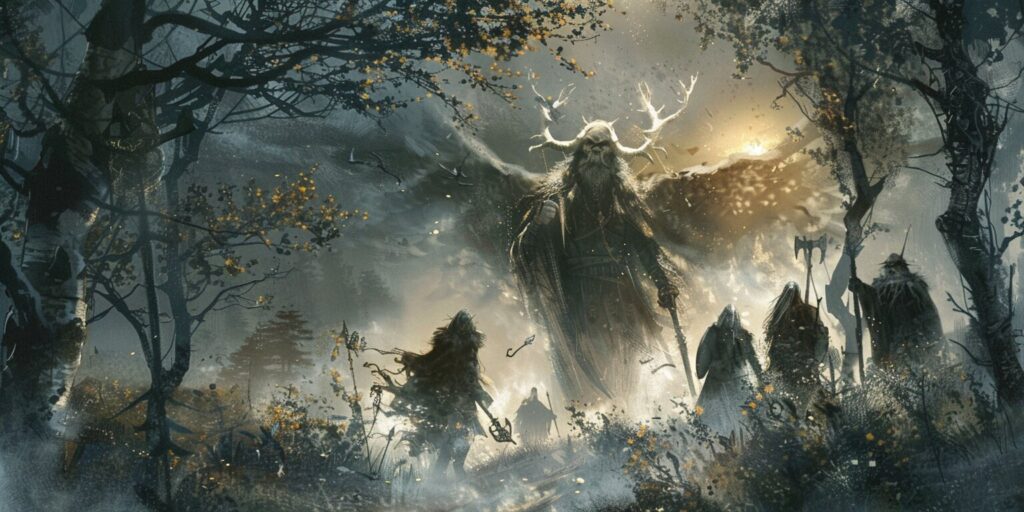
The Nine Realms and Their Inhabitants
The Norse cosmology consists of nine realms interconnected by the world tree Yggdrasil. Each realm has its own inhabitants, including both gods and mythical creatures:
- Asgard: The realm of the Aesir gods, including Odin, Thor, and Loki.
- Midgard: The realm of humans, where they coexisted with giants, elves, and dwarves.
- Jotunheim: The realm of the giants, often depicted as adversaries of the gods.
- Niflheim: The realm of ice and mist, home to the primordial beings and the source of all icy rivers and lakes.
- Muspelheim: The realm of fire and heat, inhabited by fire giants and the primordial fire.
- Vanaheim: The realm of the Vanir gods, known for their fertility and connection to nature.
- Alfheim: The realm of the elves, beings associated with light and beauty.
- Svartalfheim: The realm of the dwarves, skilled craftsmen who created powerful weapons for the gods.
- Helheim: The realm of the dead, ruled by the goddess Hel.
These realms and their inhabitants provided the Vikings with a rich tapestry of supernatural beings that played various roles in their mythology and belief systems.
Supernatural Beings Associated with Witches
Viking beliefs in supernatural beings often intersected with the practice of magic and the concept of witches. Several mythical creatures were closely associated with witchcraft:
- Wights: These spirits were believed to inhabit certain places or objects and could be either helpful or malicious towards humans.
- Trolls: Giants with an affinity for darkness and often depicted as dimwitted or malevolent creatures. They were believed to possess magical abilities and were sometimes associated with witches.
- Valkyries: These female warriors, often depicted as horse-mounted figures, chose warriors to die in battle and carry them to the halls of the gods. They were closely linked to magical practices and fate.
- Draugr: Undead creatures resulting from improper burial or emerging from their graves to haunt the living. They were often associated with black magic and witchcraft.
- Fylgja: These were guardian spirits that could take the form of an animal and were believed to be closely connected to individuals, sometimes acting as omens or protectors.
These supernatural beings and various other creatures of Viking folklore added depth and meaning to the beliefs and practices surrounding witches in Norse society.
Overall, the rich tapestry of supernatural beings in Viking folklore reflects the Norse people’s profound connection with their world’s mystical and magical aspects. These beliefs and beings provided a framework for understanding the supernatural forces at play and shaped the beliefs and practices surrounding witches and witchcraft in Viking Age society.
Shamanic Practices and the Spiritual Realm
The Vikings had a rich spiritual belief system that encompassed various practices and rituals. One significant aspect of their spirituality was shamanism, a practice that involved connecting with the spirits of nature and the spiritual realm.
Viking shamanism played a crucial role in their society. Shamans, known as seidrmen or seidrwomen, were believed to possess supernatural powers and the ability to communicate with spirits. These shamans acted as intermediaries between the human and spirit worlds, providing spiritual guidance and healing to their communities.
Shamanic practices in Viking culture involved trance-like states, during which the seidr practitioners entered into an altered state of consciousness to connect with the spiritual realm. This trance was often induced through drumming, chanting, and other ritualistic methods.
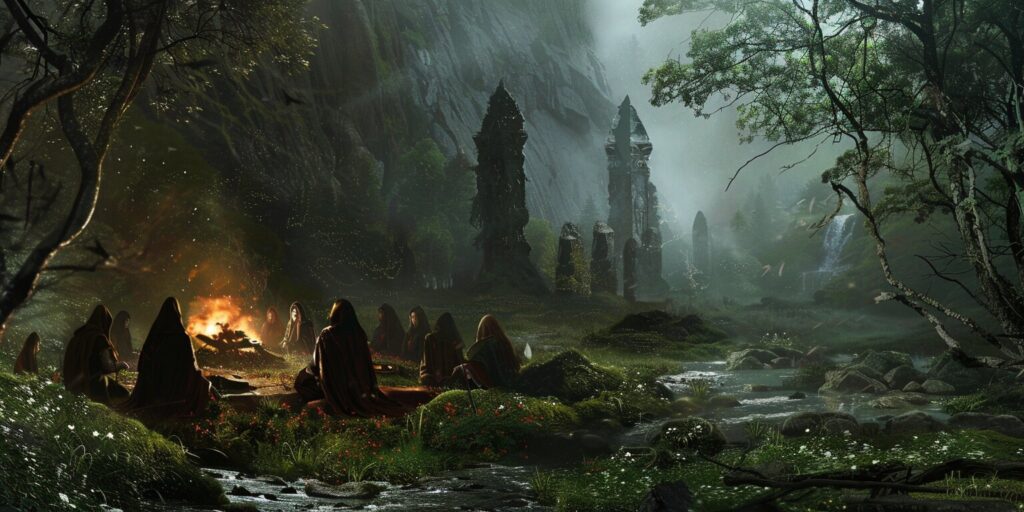
Seidr was not just a form of divination; it was a holistic practice that combined elements of magic, healing, and prophecy. The seidr practitioner sought answers to important questions, offered protection to their community, and provided healing through the use of herbs and incantations.
The Vikings’ spiritual beliefs were deeply intertwined with their everyday lives. They believed in the existence of multiple realms within the spiritual realm inhabited by gods, spirits, and other supernatural beings. These beings played a significant role in their understanding of magic and the power held by shamans and practitioners of Seidr.
Witches as Powerful Women: Empowerment or Stereotype?
The portrayal of witches in Viking society is a topic that evokes curiosity and intrigue. Were these mystical beings seen as powerful women challenging the gender roles of their time, or were they merely reinforcing stereotypes? Let’s delve into the role of viking witches as powerful women and explore the gender dynamics in viking society.
In Norse mythology and folklore, Viking witches were often depicted as figures of power and influence. They possessed knowledge of ancient magical arts such as Seiðr and Spá and were believed to be able to communicate with supernatural beings. These mystic abilities set them apart from the societal norms of the time, where women were generally expected to be submissive and conform to traditional gender roles.
- Viking Witches and Seiðr: Seiðr was a form of magic associated with women in viking society. It involved divination, healing, and the manipulation of fate. Women who practiced Seiðr, known as Volvas, played a significant role in viking communities and were revered for their abilities.
- Viking Witches and Spá: Spá, another form of magic practiced by witches in Viking times, focused on divination and prophecy. This allowed them to provide guidance and insight to their communities, further solidifying their position as powerful and influential figures.
The portrayal of viking witches as powerful women challenges the traditional gender roles in viking society. While women were expected to be primarily homemakers and caretakers, the existence of powerful witches suggests that viking society recognized and respected women’s unique skills and abilities.
However, it is also important to note that the depiction of witches in Viking times as powerful women may have been influenced by the patriarchal society in which these stories originated. While they were revered for their magical abilities, witches were often viewed as mysterious and dangerous, with their power potentially seen as a threat to the established order.
- Empowerment or Stereotype? The portrayal of viking witches as powerful women can be seen as both empowering and reinforcing stereotypes. On one hand, it showcases the strength and abilities of women, challenging societal norms and providing a sense of empowerment. On the other hand, it can also perpetuate the idea that women’s power is inherently tied to the supernatural and mystical.
- Gender Roles in Viking Society: The existence of powerful viking witches raises questions about the gender roles in viking society. Did the Vikings truly see women as equals with unique powers, or were these portrayals simply a reflection of their fascination with the mystical and supernatural?
As we explore the role of viking witches as powerful women, it is essential to consider the complex dynamics of viking society and the cultural context in which these stories emerged. By examining the depiction of witches in viking mythology and folklore, we gain valuable insights into the gender dynamics and societal beliefs of this fascinating ancient culture.
The Legacy of Viking Witchcraft Beliefs
Viking witchcraft beliefs have left a lasting legacy on modern depictions and practices of witchcraft. The influence of ancient Norse traditions can be seen in various aspects of contemporary witchcraft, emphasizing a deep connection to nature, spirituality, and the empowerment of women.
Influence on Modern Witchcraft
The Viking witchcraft legacy continues to shape the modern witchcraft movement, inspiring practitioners to explore the mystical arts and tap into their ancestral roots. Many modern witches draw inspiration from the rituals, spells, and divination methods used by the Vikings, incorporating them into their own practices.
The reverence for the natural world, prevalent in Viking witchcraft, is reflected in modern witchcraft’s focus on herbalism, earth-based rituals, and the celebration of seasonal cycles. These practices honor the natural elements and foster a strong connection between the modern witch and the forces of nature.
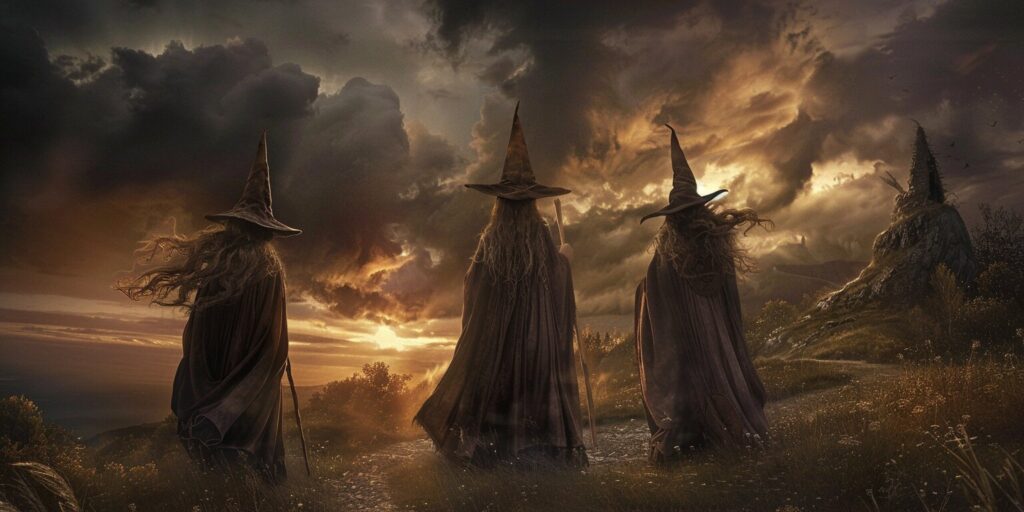
Empowerment and Women
Viking witchcraft beliefs positioned women as powerful figures within society, challenging gender norms and promoting female empowerment. The role of the Volvas and Seeresses, who practiced magic and divination, showcases the respect and status accorded to women in the Viking Age.
This empowerment of women is echoed in modern witchcraft, which embraces female strength, intuition, and independence. Modern witches often champion female leadership, equality, and the reclamation of feminine power. By embracing the legacy of Viking witchcraft, modern witches seek to honor and carry forward the spirit of empowerment that has persisted through the ages.
A Connection to the Spiritual Realm
Norse mythology and Viking beliefs in witchcraft were deeply intertwined with the spiritual realm. The concept of shamanism and the ability to communicate with the divine and supernatural beings played a significant role in Viking witchcraft.
Modern witchcraft also acknowledges the spiritual aspect of practicing magic and the connection to higher realms of consciousness. Many modern witches incorporate rituals, meditation, and divination techniques to access the spiritual plane and seek guidance from ancestral spirits or deities, drawing inspiration from the Viking belief in the spiritual realms.
Preservation of Ancient Wisdom
The legacy of Viking witchcraft beliefs serves as a testament to the enduring power and wisdom of ancient traditions. Modern witches preserve and revitalize ancient knowledge and rituals by embracing and studying the Vikings’ practices.
Through ongoing research, exploration, and adaptation, modern witches ensure that the knowledge and wisdom of Viking witchcraft continue to thrive in the modern world. This dedication to honoring and preserving the legacy of Viking witchcraft creates a bridge between the past and the present, allowing contemporary practitioners to tap into the rich heritage of their ancestors.
Conclusion
The evidence presented throughout this article suggests that the Vikings did believe in witches. While their understanding of witchcraft may have differed from modern concepts, the Vikings held a strong belief in the existence of magical and supernatural forces.
The practice of Seiðr and Spá, the role of Volvas and Seeresses, and the prevalence of witchcraft accusations and trials all point to the significance of witches in Viking society. Witches were not only seen as practitioners of magic but also as powerful women challenging societal norms.
The legacy of Viking witchcraft beliefs can still be seen today in modern depictions and practices of witchcraft. The influence of Norse mythology and folklore continues to shape our understanding of witches and their connection to the spiritual realm.
In conclusion, the Vikings did believe in witches, viewing them as a part of their supernatural and magical worldview. Their beliefs and practices surrounding witches provide valuable insights into the cultural and societal aspects of the Viking Age.

